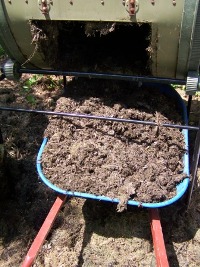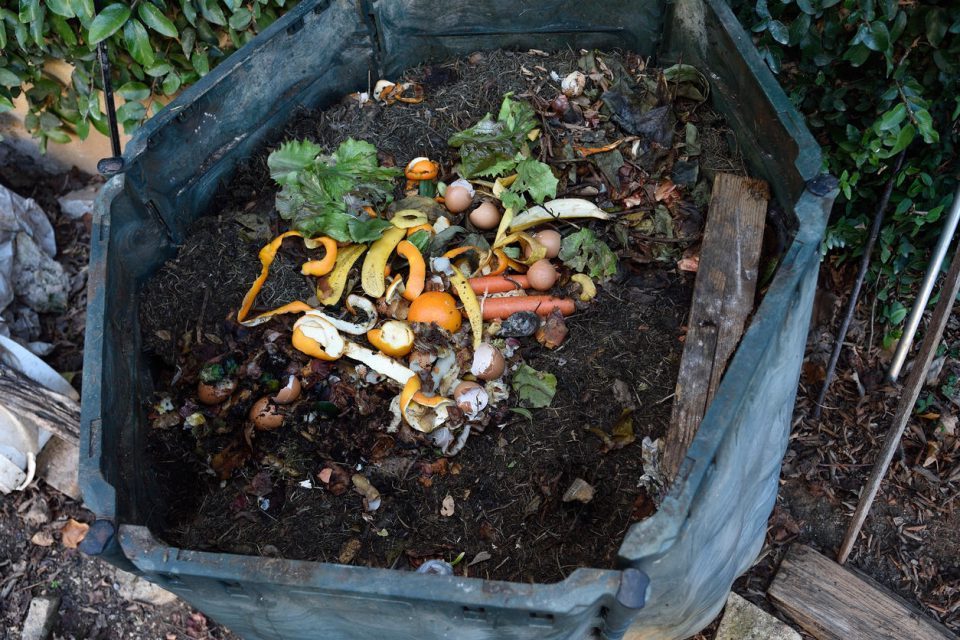Before we discuss HOW to compost, let’s talk about exactly what this stuff is and why we need it!
What is Compost
“Compost is a rich and crumbly blend of partially decomposed organic material that does wonderful things for your garden.”
What exactly is this “rich and crumbly blend of partially decomposed organic material” you ask?
Well, virtually anything that is produced in nature, and therefore can be returned to nature…pine needles, leaves, sticks and twigs, raw fruits and vegetables, eggshells, and coffee grounds to name a few. When all of this aforementioned “stuff” breaks down and decomposes, we call it compost.
Why Would We Want it in Our Garden?
All garden soil needs to be improved, and all gardeners should be concerned about, and take steps toward, improving the condition of their garden soil.
Adding compost to your soil on a regular basis...and by “regular” I mean at least on an annual basis…adds texture to the soil, increases its water holding capacity and increases the nutrients that are present in the soil, making it optimal for healthy plant growth. Adding compost to your garden’s soil will help turn that soil into a light, fluffy, easily manipulated growing medium for young plants.


AND, in contrast to fertilizer, you can never add too much compost to the soil. Because compost is natural and “organic” plants take in ONLY the nutrients they need at the time they need it.
So your compost can be JAM-PACKED with nutrients, and it will not harm your plants by over fertilizing them. Man-made fertilizer, on the other hand, can be added in excessive quantities and can do real damage to your plants if you’re not careful.
The natural way is ALWAYS the better way, and compost is a natural way!
When learning how to compost, there are 4 key ingredients you need to be familiar with:
Carbon:
This is the dry, or “brown” material you add to the pile, such as dry leaves, dry grass clippings, shredded mulch, straw, sticks, sawdust, pine needles and shredded paper (only black and white newspaper or plain cardboard should be used). Keeping extra peat moss near your compost pile is a handy way to add some brown material after placing kitchen scraps or fresh lawn clippings onto the pile.
Nitrogen:
This is the wet, or “green” material you add to the pile, such as fresh grass clippings, plant cuttings, and kitchen scraps such as coffee grounds and filters, tea bags, eggshells and any raw fruits and vegetables such as celery, carrots, peppers, apples, papayas, avocados, tomatoes, lettuce, spinach, potatoes, etc.
Water:
The correct amount of moisture in composting is critical to how quickly the decomposing process will take place. The compost pile should be moist, but not wet; close to the consistency of a wrung-out sponge is a good barometer. If the correct amount of carbon and nitrogen are present in the pile, there will usually be no need to add additional water.
Oxygen:
The microorganisms in the compost pile must have enough air in order to do their work effectively. A compost pile should be turned regularly to maintain appropriate levels of oxygen, or should be constructed in such a way so as to allow the pile to “breathe.” Compost bins should be built to be no larger than 3 feet cubed, and should have sides that allow air in.
To get oxygen to the center of the compost pile, the pile will either need to be turned regularly, or have air pockets in the center. Some gardeners insert aerators into their compost piles, such as PVC pipes with intermittent holes drilled throughout, however an easier way to accomplish this is by laying sticks down in a criss cross fashion on the bottom of the pile. This will give the pile enough oxygen to accomplish the composting task, and the sticks will eventually decompose themselves.
What’s the recipe for how to compost?
You know there must be a specific recipe for producing compost, right? I mean if you’ve done ANY googling about this subject you will have no doubt stumbled upon all types of specifics as to how to create the best and brownest compost ever!
Well, let’s break the ‘how to compost’ journey down just a bit, with a big ‘ole BUT preceding it…and that BUT is…
Don’t let this information scare you away from your composting journey! When I first started learning how to compost, some of the educational material made it seem like if I didn’t have the exact percentage of ingredients required, my compost pile would be a flat out failure.
It just ain’t so!
Compost happens naturally in nature all the time, so you really can’t mess it up too bad (even if you mess it up). Do your best to follow some general guidelines, and make it work for you! Some composting is better than none!
What you will basically need to achieve is a ratio of brown (carbon-rich) to green (nitrogen-rich) material, at a rate of about 4 to 1.
Meaning, you need a whole lot of brown material for a little green material…basically.
I try and use about 3 or 4 times as much brown material as green material and find that my compost pile usually turns out just fine.
So you’ve got your brown material and you’ve got your green material…
Now What?
Well, there are a couple of options…
- You can layer this stuff in an open pile and let it decompose over time (no intervention from you except to construct the pile initially).
- OR you can build a contained area such as this one and then decide if you’re going to let it be or turn it regularly (turning it regularly produces compost faster, and keeping it contained is usually preferable in a residential yard).
- OR you can use a handy dandy compost tumbler of your choice and produce compost at a wicked fast rate (although the stuff you produce won’t be quite as beautiful as the other methods of production).
- AND you can always add a few tricks up your sleeve to make things even easier for you! (Intrigued, aren’t you?? ;).
While it’s true that you will produce compost even if you do virtually nothing to the material you’ve already added to your pile, you probably want to produce it in a shorter amount of time than nature would.
You want to give Mother Nature the proverbial “helping hand” if you will…
What will happen in your compost pile is that the material that’s at the center of the pile will start to decompose, and in doing so, will produce heat.
To help the outer layers of the pile decompose, you’ll have to “turn” your pile about once every week to move the outer material to the inner core where the majority of the composting work is happening.
If there’s too much brown material in your pile, it will be relatively inactive (i.e. no heat), and composting will take a very long time to occur.
If there’s too much green material or the pile gets too much water (for example during a rainy spring), the pile will be thick and heavy, and may start to smell.
Some people add a tarp to their pile to avoid it getting too wet.
As you learn how to compost, you’ll discover that the speed at which you produce compost is directly dependent on the amount of effort you exert in the process.
Do nothing, and it’ll take a year or more to get your garden waste to turn into good, useable compost. Turn it regularly, and you could have some great compost in as little as a few weeks!
Composting in a small yard:
- Are you afraid to learn how to compost because you think it can’t be done in a small yard? Or…
- Do you frown on the idea of standing in a pile of decomposing material with a pitchfork on a hot sunny day, lifting and turning it in order to get composting action underway? Or…
- Do you think the idea of a huge decomposing pile of what is essentially…garbage…sitting in your residential back yard is somewhat unappealing?
Then this article is a MUST read for you! There are several ways that you can produce compost quite discretely AND in a small residential backyard.
